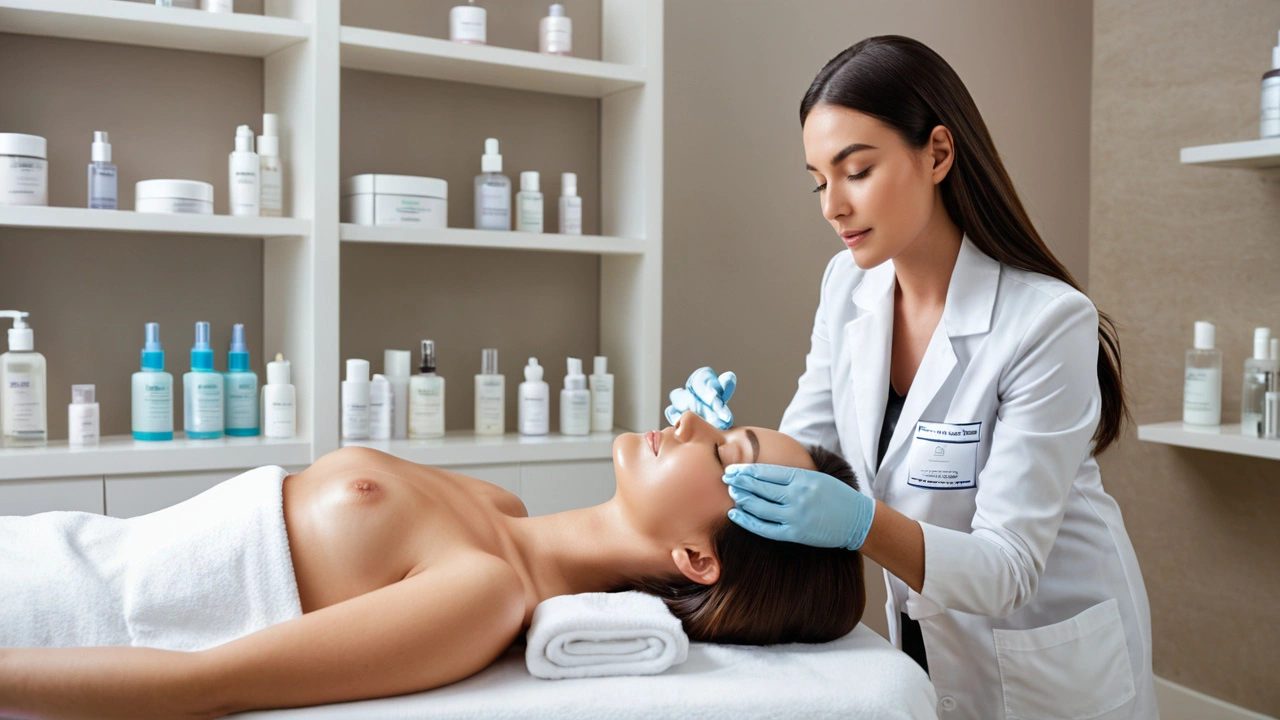Chemical Peels: Types, Benefits, Risks, and Smart Aftercare
Chemical peels can refresh your skin fast — if you choose the right type and handle aftercare properly. Want to fade acne marks, smooth rough texture, or reduce fine lines? A well-matched peel can help. But peels aren’t one-size-fits-all, and the way you prep and heal your skin decides most of the results.
A superficial peel uses mild acids like glycolic or salicylic acid. It removes the top layer of dead skin, needs little downtime, and gives gradual improvement after a few sessions. Good for mild acne, clogged pores, and dull skin. A medium peel uses trichloroacetic acid (TCA) to reach deeper layers, helping with sun spots and shallow wrinkles. Expect visible peeling and redness for about 5–10 days. Deep peels (often phenol-based) treat deep wrinkles and severe sun damage but require medical supervision, longer recovery, and sometimes sedation.
Who is a good candidate — and who should wait?
People with sun-damaged, textured, or acne-scared skin often see the biggest gains. If you have darker skin, pick gentler peels and a provider experienced with pigment risk — deeper peels can cause darkening or lightening. Avoid peels if you’re pregnant, breastfeeding, currently using isotretinoin, or have active cold sores or skin infections. Always do a patch test if you’ve never had a chemical peel before.
Prepping the skin helps. Your provider may ask you to stop retinoids or start lightening creams a few weeks before treatment to reduce complications. Follow those instructions — they matter for healing and final results.
Realistic expectations and practical aftercare
During the peel you might feel tingling, warmth, or short stinging. Superficial peels are quick; medium or deep peels can take longer and may need numbing. Results can appear within days for mild peels, but deeper improvements often take weeks to months as collagen rebuilds.
Aftercare decides how well your peel heals. For the first week expect peeling, redness, and sensitivity. Keep skin clean and moisturized—use a bland ointment or a thick cream. Don’t pick or scrub; let flakes fall naturally. Use broad‑spectrum sunscreen SPF 30+ every day, even if you stay indoors; new skin is fragile and darkens easily.
Avoid active ingredients like retinoids, vitamin C, and acids until your provider clears you. If your doctor prescribes antiviral or antibiotic cream, follow directions. Watch for warning signs: heavy bleeding, fever, spreading redness, or pus requires immediate contact with your provider.
Choosing the right provider matters. Board-certified dermatologists or licensed medical professionals supervised by one are safest for medium and deep peels. Ask about experience with your skin type, complication rates, and emergency protocols. Cost varies: light peels are affordable, deeper peels cost more due to medical oversight.
Chemical peels can give visible, lasting improvement when matched to your skin and goals. Ask questions, follow prep and aftercare, protect your skin from the sun, and be patient — better skin often shows up over weeks to months, not overnight.

The Ultimate Guide to Chemical Peels for Acne Treatment
Chemical peels can be a game-changer for those battling acne. This article dives into what chemical peels are, their benefits, types, and what to expect during and after the treatment. You'll also learn about potential side effects and aftercare tips to ensure you get the best results.
Read more